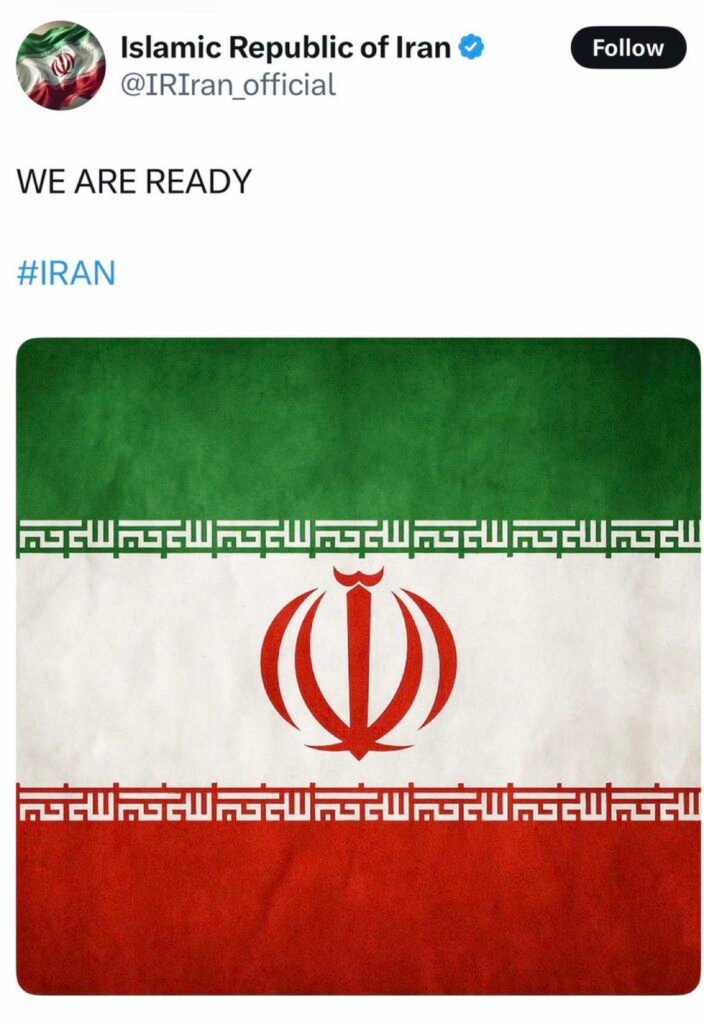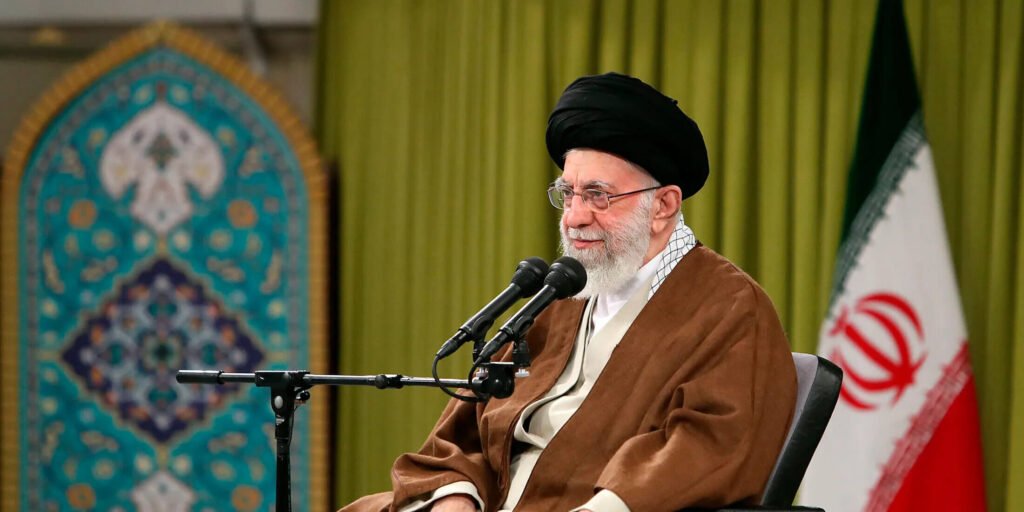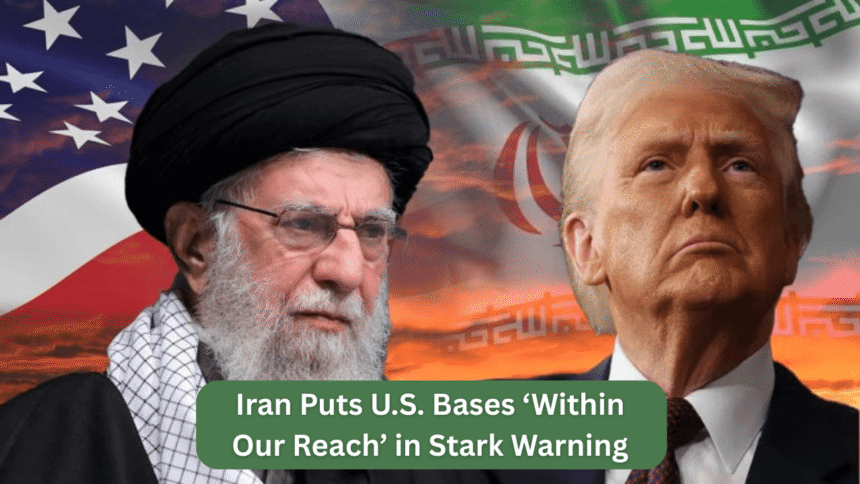In a dramatic escalation of regional tensions, Iran Puts U.S. Bases ‘Within Our Reach’ in Stark Warning Over Potential War, signaling a potential flashpoint that could ignite open conflict in the Middle East. The declaration came from a senior Iranian military official who emphasized Tehran’s capability and willingness to strike U.S. military installations across the region. This bold statement has sent shockwaves through diplomatic circles and security alliances, raising fears that the fragile balance in the Persian Gulf might be on the brink of collapse.
Iran puts U.S. bases ‘within our reach’ is not just rhetoric—it reflects a broader strategic message aimed at deterring perceived aggression and asserting regional dominance. This is the third time in the past week that the Iranian government has directly warned the United States about crossing “red lines,” especially concerning its nuclear program and influence over key regional proxies.
Iran’s Expanding Threat Matrix
The latest warning was delivered by Defense Minister Mohammad Reza Ashtiani during a televised briefing. He stated that “every American base in the region is a legitimate target if any hostile action is taken against Iran.” The statement appears to refer specifically to U.S. assets in Iraq, Bahrain, the UAE, Qatar, and even naval fleets stationed in the Persian Gulf.

Iran puts U.S. bases ‘within our reach’ resonates strongly with its long-standing policy of asymmetric warfare. With a vast network of ballistic missiles, drones, and proxy militias such as Hezbollah, the Houthis, and Shiite militias in Iraq and Syria, Tehran has developed a multifaceted deterrent strategy that goes far beyond traditional military capacity.
According to regional analysts, the repeated emphasis on U.S. bases being “within reach” is part of a deliberate campaign to build psychological pressure and reduce the political appetite in Washington for military intervention.
Strategic Context: Why Now?
Iran’s new tone coincides with two major developments: stalled nuclear negotiations and growing Israeli threats to strike Iran’s nuclear infrastructure. In recent weeks, Israeli military leaders have publicly announced their readiness to act unilaterally if Iran crosses the uranium enrichment threshold. In turn, Iran has doubled down on its enrichment efforts while reinforcing alliances with Russia and China.
The United States, caught between Israeli interests and Gulf state concerns, has been walking a tightrope. Its recent decision to partially evacuate non-essential diplomatic staff from embassies in Iraq and Kuwait further illustrates the growing unease.
Military drills conducted by Iran’s Islamic Revolutionary Guard Corps (IRGC) near the Strait of Hormuz have also heightened fears. These exercises simulate attacks on naval carriers and airbases, sending a clear message: Iran is not bluffing.
Regional Reactions and Global Implications

Iran puts U.S. bases ‘within our reach’ has provoked varied reactions across the region. Gulf states, traditionally wary of Iran’s expansionism, have increased surveillance and activated defense protocols. Meanwhile, Iraq’s government is under pressure to balance its relationship with both the U.S. and Iran, especially as American forces continue to assist in anti-ISIS operations.
The European Union has urged restraint, emphasizing the need for diplomatic solutions. However, backchannel efforts between Tehran and Washington have reportedly stalled since the Iranian presidential election intensified conservative grip over foreign policy decisions.
If the rhetoric escalates into action, the consequences could be catastrophic. The presence of U.S. military personnel in densely populated zones, combined with the risk of retaliatory missile strikes, raises the possibility of civilian casualties and regional chaos.
Proxy Frontlines: Tensions in Yemen, Syria, and Lebanon
Iran’s influence is not confined to its own borders. The Houthi movement in Yemen, armed and trained by Iran, recently issued its own warning, saying any attack on Iran would result in a regional war. In Syria, Iranian militias have repositioned near U.S. outposts, increasing the chances of direct clashes. In Lebanon, Hezbollah has upped its alert level.
These developments suggest that the phrase “Iran puts U.S. bases ‘within our reach’” is not only about hardware but also about activating a vast network of regional allies. Analysts believe that any open conflict between the U.S. and Iran would not be a two-party war, but a multi-front crisis engulfing half a dozen countries.
Pentagon’s Response and Military Posturing
The U.S. Department of Defense has not taken the warning lightly. Additional THAAD and Patriot missile defense systems have reportedly been deployed in the Gulf. Naval fleets have been repositioned, and new joint drills are scheduled with Gulf Cooperation Council (GCC) allies.
Yet, the U.S. appears cautious about provoking a direct confrontation. Officials have reiterated Washington’s commitment to diplomacy, while maintaining that any attack on U.S. personnel will be met with “swift and overwhelming force.”
Iran puts U.S. bases ‘within our reach’ thus places the U.S. in a dilemma: defend its strategic footprint without escalating hostilities, or pull back and risk a perception of weakness.
Diplomatic Channels Strained
Backchannel diplomacy, once considered a stabilizing mechanism, is faltering. Swiss intermediaries who previously helped communicate between Tehran and Washington have reported minimal progress. Iran’s Supreme Leader Ayatollah Ali Khamenei has taken a more hardline stance, rejecting calls for compromise while insisting that Iran will not surrender its “sovereign right” to self-defense and nuclear development.
Meanwhile, U.S. Congress members are split. Some advocate stronger sanctions, while others push for a diplomatic reset, warning that a war with Iran would dwarf previous Middle East conflicts in cost and complexity.
A Dangerous Crossroads
With Iran placing U.S. military bases firmly “within reach,” the Middle East stands at a perilous crossroads. The balance of deterrence could easily tip into armed confrontation. Both sides possess significant military capabilities, and the presence of numerous flashpoints—from Iraq and Syria to the Red Sea and Gulf—means that any misstep could be disastrous.
For now, the world watches and waits, hoping that diplomacy can find a path forward before warnings turn into warfare.
You may also like: LA Curfew Declared by Mayor Amid Rising Tensions and Federal Troop Presence

